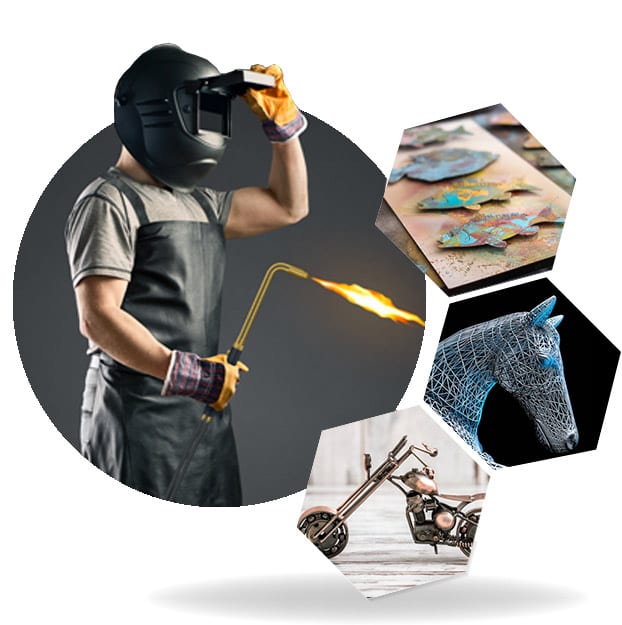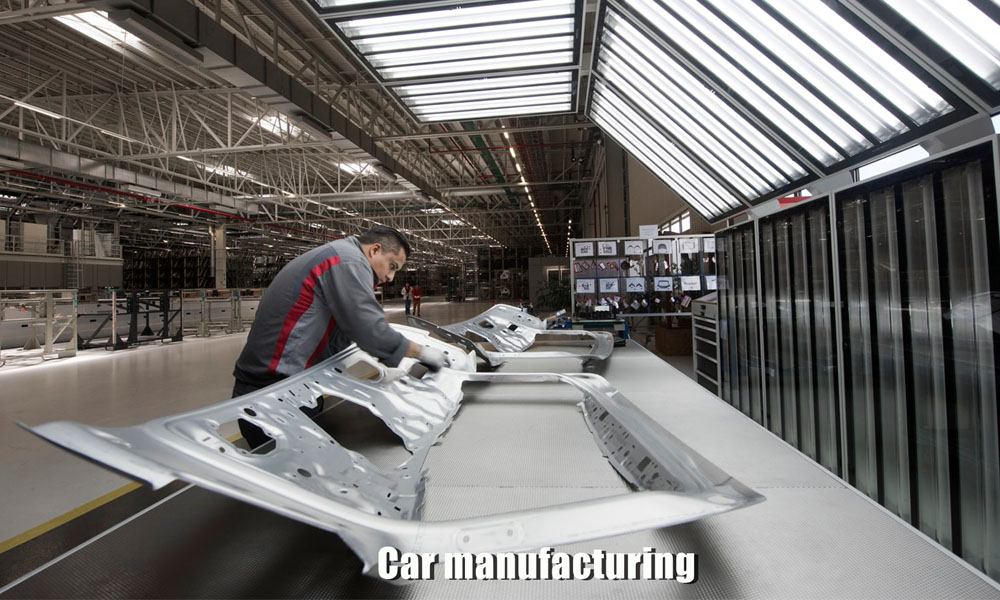Everything about Welding: Secret Insights Into Techniques and Finest Practices for Success
Welding encompasses a variety of techniques, each suited for specific materials and applications. Understanding these methods, such as GMAW, SMAW, and TIG, is necessary for attaining ideal results. Furthermore, the ideal devices and safety practices can not be forgotten. As prep work and troubleshooting play vital roles in the welding procedure, mastering these aspects can substantially improve the quality of the end product. What are the key aspects that guarantee an effective weld?
Comprehending Different Welding Methods
Welding methods incorporate a range of methods, each fit to details applications and products. Among one of the most usual methods are Gas Metal Arc Welding (GMAW), Protected Metal Arc Welding (SMAW), and Tungsten Inert Gas Welding (TIG) GMAW, likewise called MIG welding, is prominent for its rate and flexibility, making it optimal for slim materials. SMAW, or stick welding, is preferred for its simplicity and performance in exterior settings, specifically with thicker metals. TIG welding provides accuracy and control, making it ideal for elaborate work and non-ferrous metals (Belgrade Welding). Each technique has its special benefits and factors to consider, allowing welders to select the very best approach based upon the project's needs, product type, and wanted outcomes. Recognizing these techniques is important for successful welding
Necessary Welding Devices and Tools
While different welding strategies need certain skills, the appropriate tools and devices are similarly important for accomplishing top quality outcomes. Important welding devices consists of welding machines, which differ depending upon the method-- such as MIG, TIG, or stick welding. Protective equipment, including handwear covers, aprons, and safety helmets, guarantees security and convenience throughout the procedure. Additionally, clamps and fixtures help secure products in location, making sure accuracy in welds. Consumables like welding rods, cord, and securing gas are likewise essential components that affect the high quality of the weld. Devices such as cutters and grinders assist in surface prep work and post-weld finishing, adding to a specialist outcome. Buying top notch equipment ultimately improves the effectiveness and performance of welding projects.
Security Practices in Welding
Correct safety techniques are necessary in the welding market to shield workers from potential risks. Welders must put on proper individual protective tools (PPE), including headgears with appropriate shading, gloves, and flame-resistant garments. Ample air flow is important to minimize direct exposure to hazardous fumes and gases generated during the welding process. Additionally, employees should be learnt the right handling of welding tools to avoid mishaps. Fire precaution, such as maintaining combustible materials away from the welding location and having fire extinguishers easily offered, are required. Routine evaluations of tools and work areas can assist determine prospective dangers before they result in accidents. By adhering to these safety and security techniques, welders can produce a more secure working environment and reduce dangers related to their profession.
Readying Materials for Welding
Preparing materials for welding is an essential step that significantly influences the quality and integrity of the end product (Montana Mobile Welding and Repair Belgrade Welding). Correct prep work includes cleansing the surfaces to eliminate contaminants such as rust, dirt, and oil, which can endanger the weld. Techniques such as grinding, fining sand, or using solvents are typically used to achieve a clean surface. In addition, ensuring that the materials fit together comfortably is vital; spaces can result in weak welds. It's additionally crucial to take into consideration the alignment and positioning of the components, as this will impact the convenience of welding and the last result. Choosing the suitable filler product and making sure compatibility with the base steels is important for attaining solid, long lasting welds.
Tips for Achieving High-Quality Welds
Attaining high-grade welds requires interest to information and adherence to best practices throughout the welding procedure. Appropriate joint prep work is crucial, guaranteeing surface areas are tidy and cost-free from contaminants. Choosing the proper filler product and welding technique based on the base steels is vital for suitable bonding. Preserving constant travel speed and angle while welding can promote and prevent defects uniformity. Furthermore, managing warmth input is crucial; extreme warmth can bring about bending and damaged joints. If necessary, consistently inspecting the welds during the procedure permits for prompt adjustments. Utilizing suitable post-weld therapies, such as cleaning and stress alleviation, can enhance the resilience and stability of the weld, eventually making sure an effective end result.
Fixing Typical Welding Issues
Welding frequently offers obstacles that can impact the high quality and stability of the end product. Usual issues such as porosity, inconsistent weld grains, and getting too hot can develop, each needing details fixing strategies. Comprehending these problems is important for welders to improve their abilities and accomplish optimal outcomes.
Porosity Issues Explained
Although porosity can usually be neglected, it stays an essential problem in welding that can jeopardize the honesty of a finished product. Porosity describes the visibility of small gas pockets within the weld grain, which can weaken the joint and lead to premature failing. This problem normally occurs from contaminants, dampness, or inappropriate securing gas coverage during the welding procedure. To minimize porosity, welders need to validate that the base products are dry and tidy, utilize ideal shielding gases, and preserve constant welding specifications. Frequently evaluating the tools and environment can additionally aid identify prospective concerns prior to they materialize in the weld. Resolving porosity successfully is important for attaining solid, sturdy welds that satisfy quality criteria.

Irregular Weld Beads
Irregular weld beads can significantly influence the high quality and stamina of a finished product. Various factors add to this issue, including improper traveling speed, inaccurate amperage setups, and irregular electrode angles. When the welder relocates also promptly, a bead might appear slim and lack infiltration, while relocating too slowly can create extreme accumulation. find out here In addition, using the incorrect amperage can lead to either undercutting or extreme spatter, both of hop over to these guys which concession weld honesty. The welder's strategy, such as inconsistent torch movement, can likewise cause irregular bead look. To alleviate these troubles, welders ought to concentrate on preserving stable, controlled movements and making certain correct equipment settings to attain harmony in their welds. Consistency is crucial to attaining solid and trustworthy welds.
Overheating and Bending Issues
Extreme warm during the welding process can bring about substantial overheating and deforming issues, influencing the structural stability of the workpiece. These issues frequently manifest as distortion, which can jeopardize alignment and fit-up, making additional setting up testing. Variables contributing to overheating include the choice of welding parameters, such as voltage and take a trip rate, as well as the kind of product being welded. To minimize these problems, welders should keep constant travel speed and suitable warmth input while checking the workpiece temperature level. Furthermore, pre-heating or post-weld warmth therapy can help minimize stresses brought on by quick air conditioning - Belgrade Fabrication. Routine assessment and adherence to finest practices are crucial in stopping overheating and making certain the durability and reliability of bonded frameworks
Regularly Asked Inquiries
What Are the Job Opportunities in the Welding Market?
The welding market provides varied profession possibilities, including placements as welders, designers, educators, and inspectors. Specialists can operate in production, construction, aerospace, and automotive sectors, gaining from solid need and competitive salaries in various roles.
Just How Can I Boost My Welding Rate Without Giving Up Top Quality?
To boost welding speed without compromising quality, one ought to exercise effective methods, keep tools, enhance setups, and improve hand-eye coordination. Routine training and looking for responses can additionally significantly contribute to accomplishing quicker, premium welds.
What Certifications Are Available for Welders?
Numerous qualifications exist for welders, including those from the American Welding Society (AWS), the National Center for Building Education and Research Study (NCCER), and various industry-specific companies. These credentials enhance employability and demonstrate skill Our site effectiveness.
Exactly How Does Welding Affect the Qualities of Metals?
Welding affects the homes of metals by changing their microstructure, which can lead to changes in solidity, ductility, and toughness. Heat input and air conditioning rates during the process considerably impact these material characteristics.
Can I Weld Dissimilar Metals Together?
